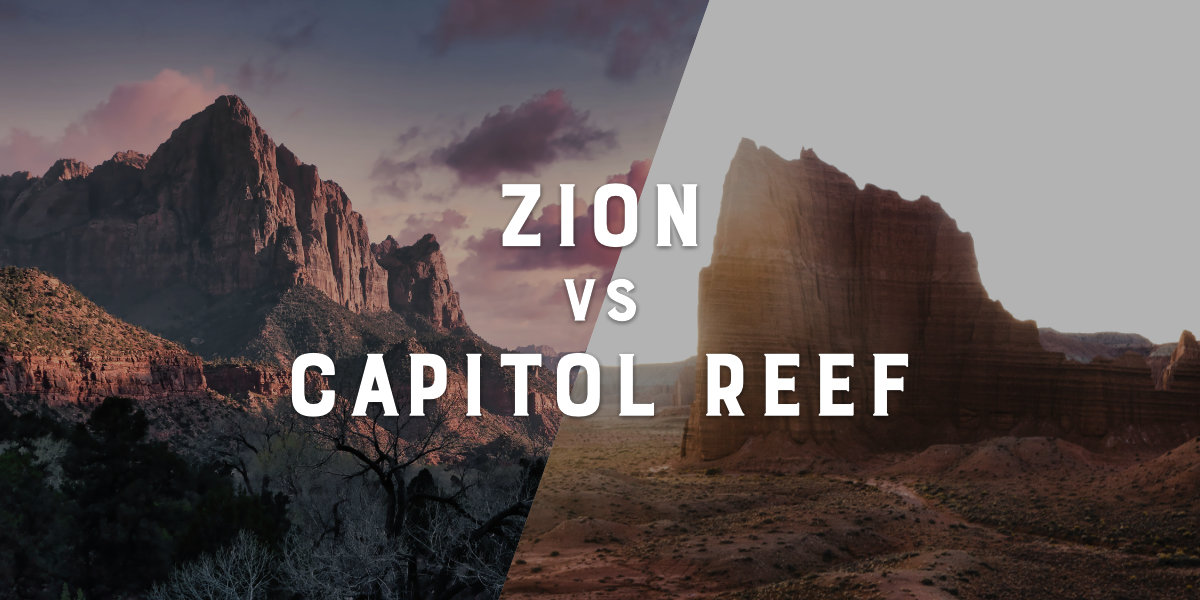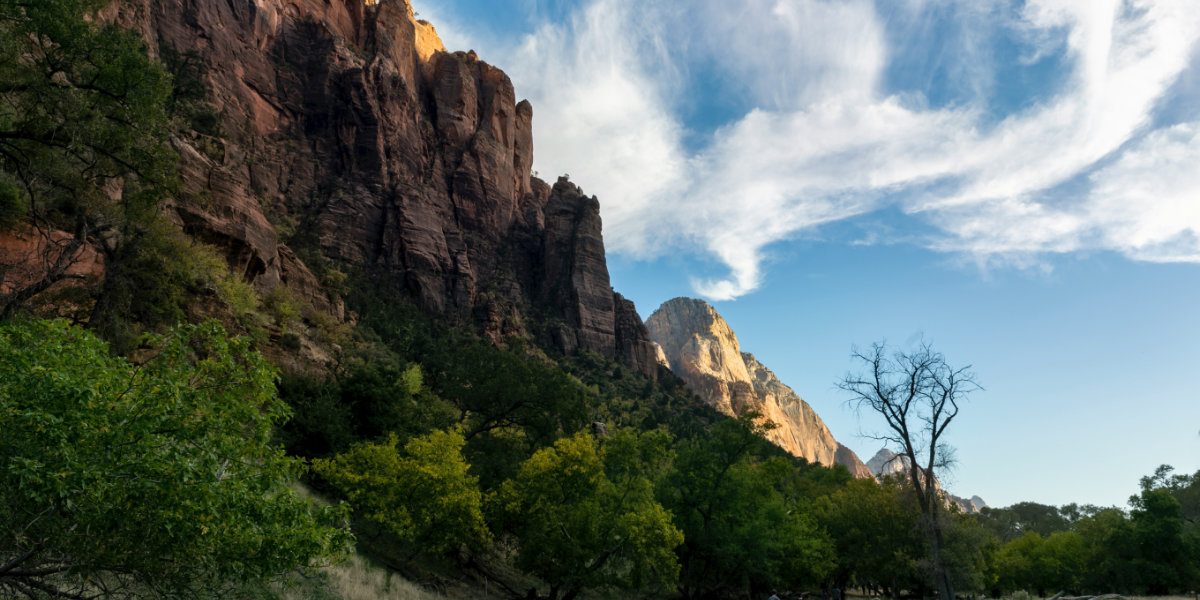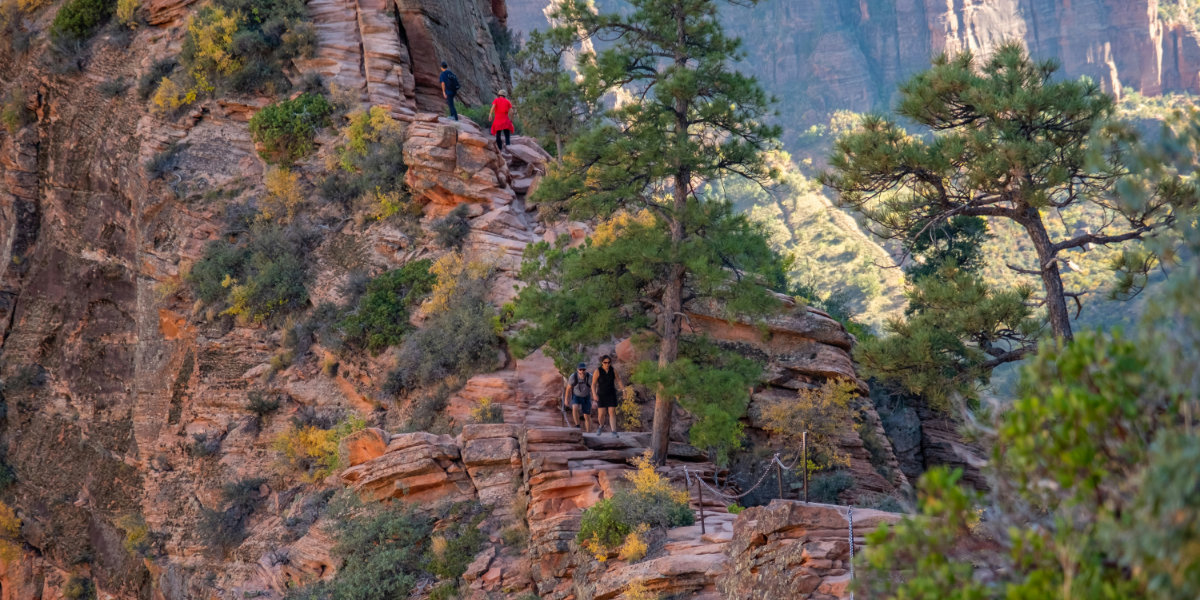Zion vs. Capitol Reef: Pros and Cons of Each Park
Posted in: Outdoor adventures, Travel on February 24, 2024.
How to Choose?
Many of the travelers who come to Southern Utah can only visit one national park. And that can make it tough, since it’s hard to choose between all five of the major parks. We at the Lodge understand this, and we want to try to help you out a little bit, so we’ve decided to write a couple comparison posts. This time around we’re comparing Capitol Reef and Zion National Parks.
So let’s get to it. If you can only visit one of these fantastic national parks, which do you choose? Both parks have amazing geology and unbelievable scenery. But for us at the Lodge, it really comes down to the kind of experiences that you can have in each place.

Photos by Stin Niels Musche and Evan Sanchez via unsplash.com
Quick Disclaimer
Don’t get us wrong; if you have time to explore both national parks, you really should. Visiting both is highly recommended. This is just to help you get a better idea of which park offers what.

Photo by Tracy Zhang via unsplash.com
Capitol Reef National Park
Scenery Description – Many of Capitol Reef’s sandstone formations are quite a bit older than those found in Zion (or at least Zion Canyon) so they are more eroded. This has created monoliths like the Temple of Sun in Cathedral Valley. So expect more crumbled sandstone cliffs and wider canyons in general. (This is, of course, not true for every part of the park. The sharp, sheer cliffs in Fruita, and the slot canyons in the Waterpocket Fold are the outliers, however.) The added erosion time has also lead to more arches compared to Zion.
The Good Stuff – Obviously the scenery is very good. That’s why it’s a national park. But if you read our blog, then you probably know what we consider to be the biggest bonus to Capitol Reef already. It is significantly less crowded, as it only draws in about a quarter of the annual visitors of Zion. This means that once you get outside the main section of the park – the Fruita section – you’re basically on your own. So you can often hike a trail and never meet another person. We really like this about Capitol Reef.
Also as an added perk, unlike Zion National Park, there is no entry fee required to get into the park. (But there is a fee station to enter the Capitol Reef Scenic Route toll road.) And while the park entrance fee probably shouldn’t be a factor in your vacation plans, it’s nice to save a couple of bucks.
The Not-So-Good Stuff – Since there are fewer tourist’s who visit Capitol Reef, there is also less government funding allocated to the park. This translates into fewer roads and less accessibility. Zion has two bus lines that service a large section of the park, but in Capitol Reef many of the roads are not even paved. This can limit the amount of the park that the average visitor is likely to see.

Photo by Trac Vu via unsplash.com
Zion National Park
Scenery Description – Zion has an lot of amazing – and diverse – geology. All within an easy distance of each other. There are sections of the park covered in Checkerboard Mesa, parts of the park where huge sandstone cliffs loom overhead, and parts where you can hike in clear water through immense, narrow canyons. It’s a big place. And there is a lot that you can see.
The Good Stuff – Zion National Park is easier to get to, as it has a large city center nearby – Saint George, Utah, and the surrounding towns. And it’s a fairly short drive to Saint George from the international airport in Las Vegas. These population bases also give the tourists more amenities. (For example, there are no fast-food chain restaurants near Capitol Reef.) This translates to more support for your trip.
Zion also has the advantage of having it’s main attractions located relatively close together. You can see more of the distinct kinds of desert scenery that make Southern Utah famous. That’s not to say that Capitol Reef offers less, but the different geologies of the park are harder to reach. In Zion, you can go from the hot, dry mesa plains to quiet, lush green pools in a few minutes. In Capitol Reef you’ll need a couple hours and a high-clearance, all-wheel-drive vehicle.
The Not-So-Good Stuff – You already know what we’re going to say. For us the biggest downside to Zion is the crowds. Every year 3.5 million visitors come to the park. And especially in the summer months, the throng of people can make it hard to enjoy the natural beauty that surrounds you. (When you’ve visited you can understand why the park now requires ticketed entry to Angels Landing.) This can be somewhat mitigated by going during early spring and late autumn, but there isn’t really any way to completely avoid people.

Photo by Gantavya Bhatt via unsplash.com
What To Do In Each Park
Maybe this has helped you make a decision as to which park best fits into your idea of a Southern Utah vacation. If you’re wondering what you should do in the national park of your choice, then we’ve can help with that too. Check out this guide for Capitol Reef National Park, and this one for Zion National Park. And don’t worry, whichever park you decide to visit, you’ll be blown away by the beauty of Southern Utah!

